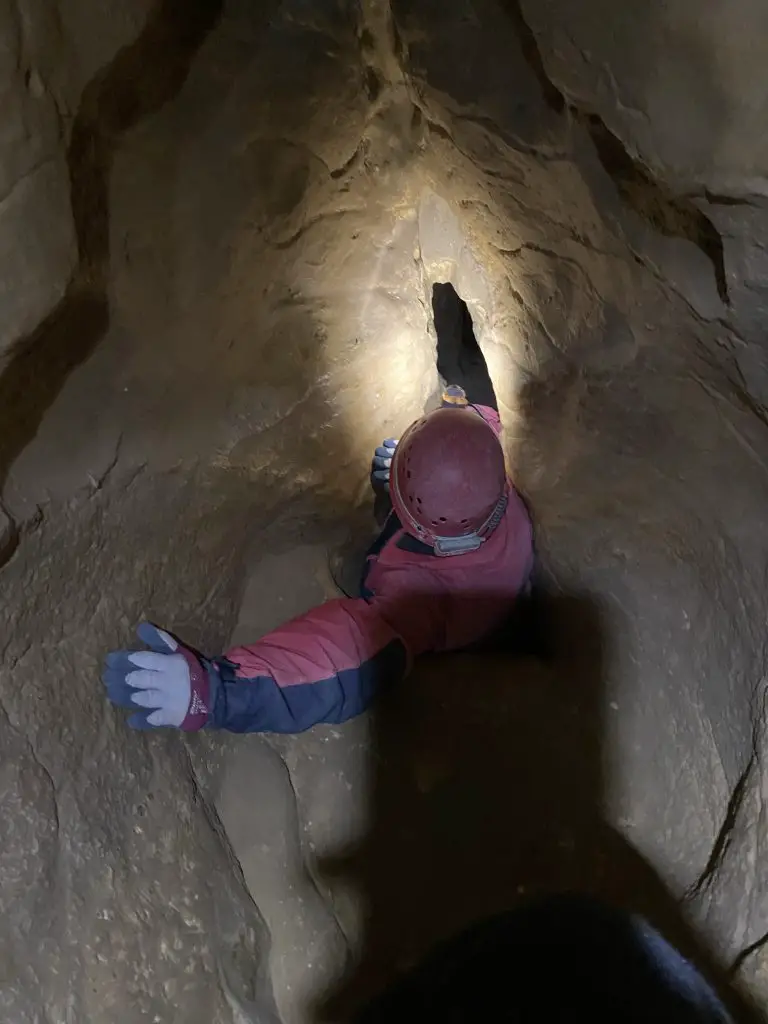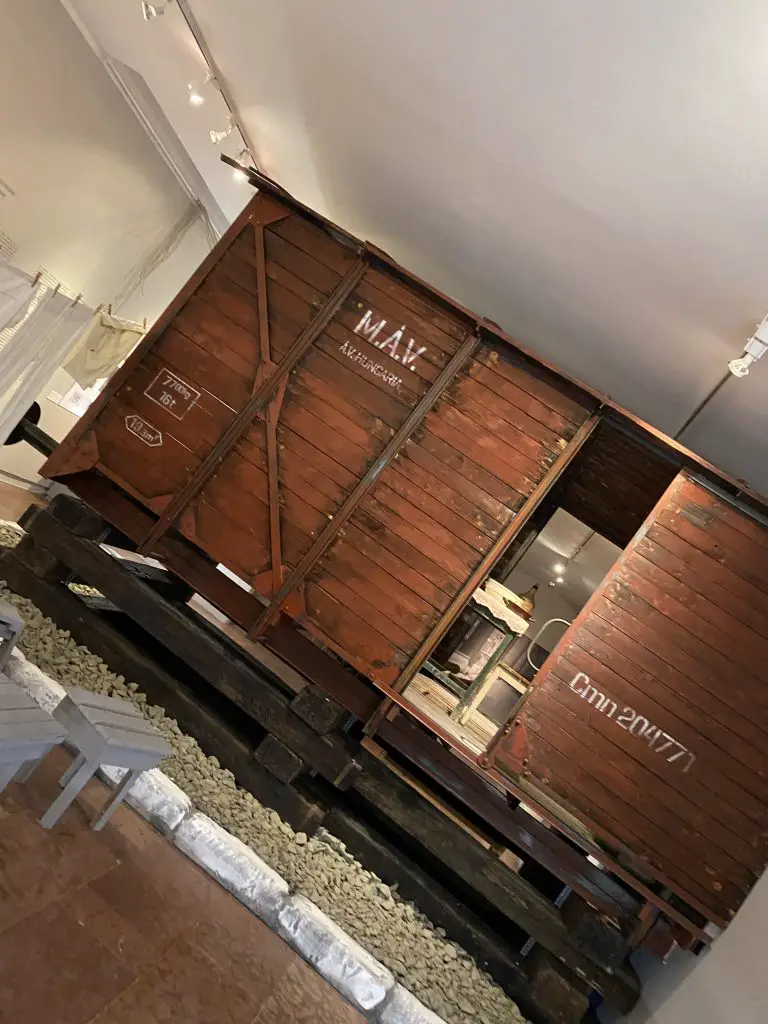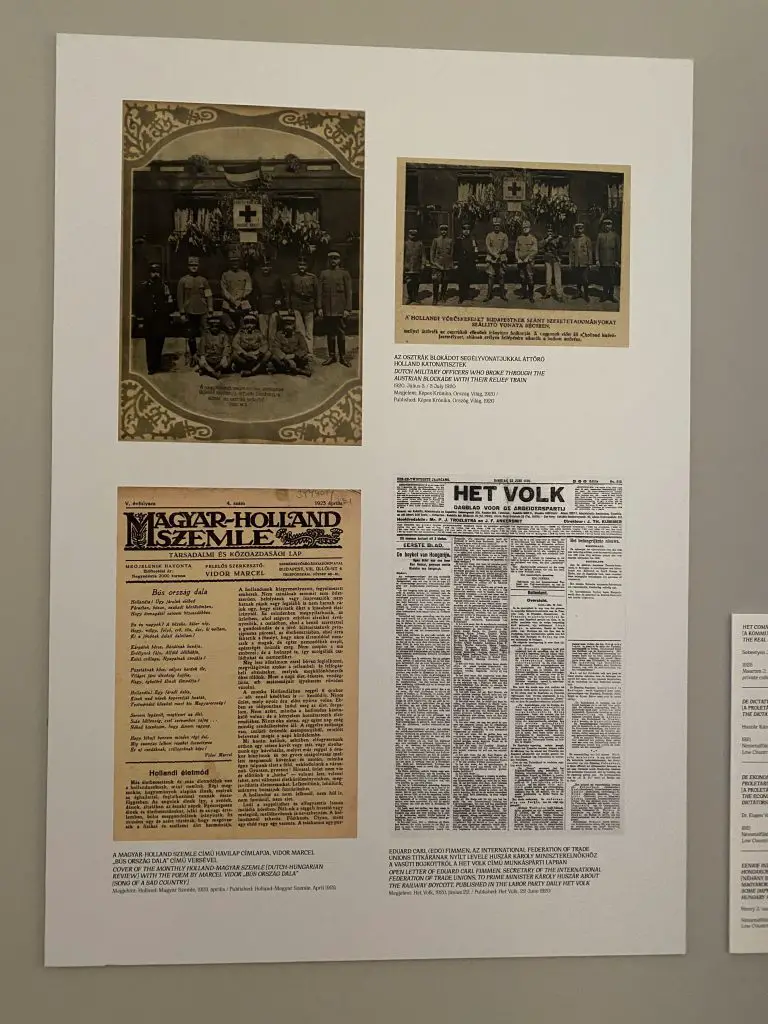Nothing says “you know nothing about this place” like finding out the city you thought you were visiting technically doesn’t exist. While we may call it Budapest, in actuality each side of the Danube river is a different city — either Buda or Pest! From the moment I landed and made that discovery, I suspected I had no idea what I was getting into. Fortunately, it turned out that my two friends and I were in for a treat! Now, let’s to get started started answering our question:






Navigate the City’s (Literal) Underbelly
Embrace your inner explorer: Go spelunking!
You know what they say about assuming things? Well, on this trip I learned that you should really look closely at the links your friends send you for activities instead of responding “sounds nice!” because you think you know what it’s going to say. Since other times I’d gone caving had generally been leisurely strolls underground, I assumed that when my friend suggested “Adventure Caving” under Budapest the wildest thing I’d have to do would be ducking under a rock or navigating some slightly uneven ground. Besides, how big could a cave under a major European capital be?
Needless to say, I was in for quite the surprise when my companions and I showed up for our reservation. As it turns out, Budapest has a huge labyrinth of caves that runs beneath it (particularly on the Buda side) and the one we’d be going into stretches around 18 miles, though obviously we wouldn’t be going through all of it. The company provided colorful jumpsuits and a helmet with a headlamp to everyone that had signed up for the tour, had us sign a waver, and then the adventure began!
The experience can best be described by two anecdotes. First, there was one part of the tour where we had to go down a crevice one-by-one and we affectionately dubbed it The Birthing Tunnel. You basically had to twerk to get through it, and I’d never felt more like I understood what a baby felt during childbirth. Second, there was a moment where our group congregated in a big cavern and then the guide said it was time to continue. We all looked toward the obvious path down, but he stopped us: no, he said, and then pointed to the ground while announcing “we’re going to go through the hole by Tori’s feet”! I hadn’t even registered that particular hole as a possibility to go through!
Despite what these stories might make it seem like, this adventure really isn’t too intense. There was a lot of climbing over rocks and sliding into holes, but I’m almost 6 feet tall and not a particularly fit person and I managed just fine. Our guide also told us that they partially adjust their routes based off what it seems the people who signed up for the tour can handle, so if you’re of reasonable health and fitness you should be fine.
In summary, read what you’re signing up for. But on the other hand, go spelunking under Budapest!
Pro Trip: The caves tend to be cool year-round, but if you’re doing Adventure Caving you’ll be sweating some too. Dress accordingly!
Pro Tip: If you have children, anyone who doesn’t like tight spaces, or people in your group that can’t physically handle a more intense caving experience, you can also book a more family-friendly Cave Walk.






No Going Hung(a)ry
Must-trys in the Budapest food-and-drink scene
While Hungary isn’t known for its food scene in the same way as places like France, there were definitely some unique things to indulge in both at traditional establishments and stands along the street.
Restaurants and Bars-
Budapest is filled with a number of so-called “ruin bars”, a trend that started back in 2004 when a group of entrepreneurs saved an old building that had been slated for demolition to open the bar Szimpla Kert. Instead of completely fixing run down buildings, ruin bars embrace whatever is there and add to it to create a quirky, eclectic aesthetic. With each ruin bar sporting mix-and-match furniture, strange walkways, and the most random decorations you’ve ever seen, each one promises you’ve never seen anything like it. When my friends and I went Szimpla Kert, we decided to try two Hungarian staples: Hungarian goulash and pálinka. While far from fancy, the goulash was delicious. We got it served as a sandwich so we could split it easier, and the stew had a lovely paprika flavor (a beloved spice in Hungary). The pálinka, a strong and immensely popular Hungarian fruit liquor, on the other hand… well, let’s just say that when we ordered it at a different bar the staff watched us drink it so they could chuckle at our reactions. Worth trying, but I would advise against buying a bottle before seeing if you like it first!
Another cool food experience is a dinner cruise along the Danube. You get to see all the beautiful lights from the historic buildings along the shore, indulge in some drinks, and enjoy some fabulous food! It’s exactly what it sounds like, but in this case that’s a good thing. My friends and I enjoyed dressing up and relaxing on the river, though I think we’d all recommend not booking your dinner cruise back-to-back with Adventure Caving.
Full disclosure, I can’t pronounce any of them, but the deserts we had in Hungary were amazing. On our last day of the trip, my squad and I went to one of the plentiful confectionaries in Budapest and sampled a few treats one of our Hungarian friends had recommended. Everything was fabulous, but the somlói galuska (a trifle cake with cream, sponge, chocolate, and traditionally some rum involved) was the rockstar. Another favorite was the aranygaluska, which to me seemed a lot like a bread pudding.
Street Stands-
I’d be remiss not to start this section with the thing I literally twisted my ankle running to get before the street stand closed: chimney cakes. They’re delicious, hollow, cylindrical pastry casings that often get filled with things like whipped cream, ice cream, and other complimentary toppings. If that doesn’t sound good, I don’t know what does!
Last but not least, given my trip to Budapest took place in January, you can bet it was cold. Fortunately, there were loads of people selling warm mulled wine! It was probably the best mulled wine I’ve ever had, and it was very reasonably priced. Given the time of year, it was amazing to have it as a handwarmer while looking at all the Christmas lights that were still set up on one of the main pedestrian streets, Fashion Street. 🙂
Pro Tip: Get some smoked paprika before you leave from one of the shops! It’s hard to find paprika so wonderful outside of Hungary. I bought three bags and still wish I’d purchased more.






WWII History Buff Wonderland
Memorials and museums galore
I never learned about Hungary during WWII in any meaningful way during school, so it was extremely sobering for me to hear just how much the Holocaust impacted the country. One statistic that made me realize just how little I knew was that of the 1.1 million people who were murdered at Auschwitz, 430,000 came from Hungary (Source). Another was that only 255,000 of the 825,000 Jews identified as part of the 1941 census survived the war; nowadays, only around 100,000 Jews still live in Hungary, and primarily in Budapest (Source).
There are a series of memorials around Budapest that are related to WWII, and one that you’ll almost surely stumble upon if you’re walking along the Danube near the Hungarian Parliament Building is a series of old-fashioned iron shoes on the ground that are pointed toward the river. From a distance you might not even realize they aren’t real shoes, but as you get closer it’s clear that they’re set into the concrete. During the war, thousands Hungarian Jews were marched to the banks of the Danube and told to take off their shoes by the Hungarian Arrow Cross Party. Shoes were valuable, and the Arrow Cross militiamen didn’t want them to fall into the river with the victims’ bodies when they were executed. On the day I was visited the memorial, which was installed in 2005, there was a fresh flower stuck inside one of the shoes.
Aside from memorials, another great way to learn about Budapest and Hungary’s WWII history is through the many museums the city offers. For example, a temporary exhibit at the Budapest History Museum detailing how starving families temporarily sent their children to live with families in places like the Netherlands still sticks with me. Another popular museum for this topic that I admittedly didn’t have the time to step into is the House of Terror Museum, which is housed in a former Nazi Headquarters that was also used to hold and torture prisoners.
Additionally, you can visit to Budapest’s Jewish Quarter! Back in 1910, 23% of Budapest (roughly 200,000 people) was Jewish, and a large Jewish Quarter emerged (Source). Unfortunately, the Nazis turned this area into a ghetto where many people died due to starvation, poor conditions, or murder during WWII. During the Communist era the Jewish Quarter continued to decline, though today the area has been revitalized with the emergence of things like ruin bars and trendy restaurants. Also notable in the Jewish Quarter is the stunningly beautiful Dohány Street Synagogue, the largest synagogue in Europe.
Pro Tip: Buying the Budapest Card is a great deal! It gives you free or heavily discounted access to the city’s public transport, a huge portion of the museums, walking tours, and more. As long as enough of the items it includes fit on your to-do list, this card is an absolute steal.






Gone Swimmin’
Budapest’s thermal baths
Budapest is famous for its thermal baths, particularly Széchenyi Thermal Bath, which has an elaborate yellow-painted pool complex. As far as my personal opinion, I did like going to Széchenyi during my time in Budapest, but it wasn’t quite as magical as I’d hoped it would be.
On the plus side, the outdoor pools of Széchenyi are immensely instagrammable and pretty. They’re warm, have some fun water features, and appeared as clean as any other public pool you’d go into. I also liked that they had some assorted depths and configurations for the pools, so we could switch up how we were enjoying the water. It was definitely relaxing and a fun thing to do with my friends!
On the flip side, I have three primary dings against Széchenyi. First, some of the staff were rude when we asked questions and tried to navigate where we were supposed to go. Second, the pools could be quite crowded; there were some areas my friends and I could find breathing room, but there were also a number of times it felt like the area we were in was overfilled. Third, the indoor pools looked nasty. As in, my friends and I verbally acknowledged that they weren’t appealing and said we wouldn’t go in them if we couldn’t find the outdoor pools. They were probably plenty clean in actuality, but the vibe they gave off wasn’t one I wanted to soak in.
Overall, it was fun to go to Széchenyi Thermal Bath but it could’ve been a better experience. Truthfully, I think this is because I’ve spent so much time at Iceland’s thermal pools, which I generally found less crowded, cheaper, and nicer. With that said, Icelandic thermal pools are frequented by locals and more about function than form, so they do have a different intent. Either way, I still think Széchenyi is worth a trip if it’s something you’re interested in!
Pro Tip: Visiting the thermal baths after going caving or doing another more rigorous physical activity can be great for recovery.
Pro Tip: Book in advance, particularly if you want to do any add-on activities like a massage.







